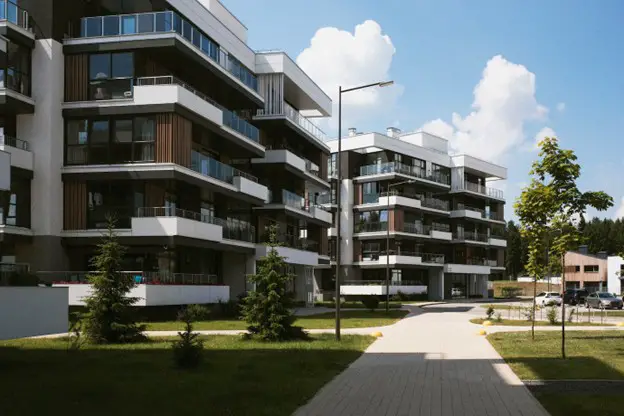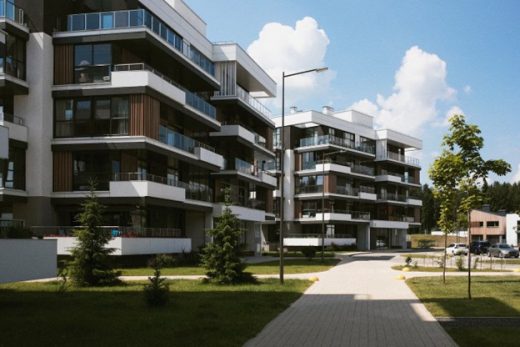Effective property management strategies guide, Building design durability, Home maintenance role
The Role of Architecture in Effective Property Management Strategies
July 19, 2024
When it comes to property management, we usually envision maintenance, tenants, and financials. Although these are very important, one factor that has not been discussed but is equally as important is architecture. The physical structure and the appearance of a property are some of the aspects that can greatly affect the property management process. Utilizing property management software can help streamline these processes and ensure that architectural considerations are effectively integrated into overall management strategies.
1. Durability and Maintenance in Design
Another important aspect of architecture that affects property management is the use of materials and design features that will last long without requiring frequent repairs.
- Material Selection: Using better quality and more durable products will minimize the repair works and their costs. For instance, choosing weather-resistant siding, reliable roofing material, and high-quality plumbing fixtures will drastically reduce the frequency of maintenance problems in the future.
- Smart Layouts: Another aspect of design that can be a game-changer is architectural design which provides easy access to maintenance activities. For instance, the integration of useful utility rooms and proper ventilation systems means that property managers can easily identify problems that need to be fixed and tend to them without much difficulty.
2. Improving the Standards of Tenant Satisfaction and Retention
Beautiful architecture affects tenant satisfaction which is essential in the reduction of tenant turnover rates and enhancement of occupancy levels.
- Aesthetic Appeal: The aesthetically pleasing structures are more likely to secure tenants and keep them in the building. A visually appealing façade and entrance, good layouts of the compound, and social spaces go a long way in making tenants feel at home.
- Functional Spaces: Contemporary architectural designs focus on the development of multifunctional living areas. Increased space, good lighting, open floor designs, and proper planning of the house make the homes more comfortable to live in. If tenants are satisfied with the aesthetic of their living areas in addition to their functionality, they are less likely to leave, therefore decreasing the rates of vacancies and turnover expenses.
3. Incorporating Sustainable Design
Sustainability is not just a trend; it is an essential factor that should be considered in contemporary property management. Sustainable architectural design can cause a substantial reduction in costs and increase the property value for the owner and resident.
- Energy Efficiency: Buildings that are designed with energy efficiency in mind can significantly decrease expenses for utility. Some of the desirable features include quality insulation to reduce heat loss, energy-efficient windows, and doors, and provision for solar panels to help in minimizing energy costs. These costs can be cut and taken off the rent, making the property more appealing to potential tenants.
- Green Spaces: Integrating of green roofs, community gardens, and spacious green areas can benefit the occupants of the facilities and promote eco-friendliness. They also enhance the quality of air and offer recreational space while at the same time enhancing the value of the property.
4. Promoting Safety and Security
Security is a crucial factor in property management, and the architectural features of a property can significantly boost its safety.
- Natural Surveillance: Some architectural and design features that enhance natural surveillance include proper positioning and design of windows and doors, lighting, and how the premises are constructed in a way that allows people to monitor the environment. This concept is known as Crime Prevention Through Environmental Design (CPTED), which entails the use of architecture to boost security.
- Secure Entrances and Exits: There are steps which if well laid down can help in preventing access and or exit into or from the property. Components such as controlled entryways, compound gates, and other forms of security features incorporated in the building structure make the living space more secure, adding to the advantages when it comes to marketing the building to potential tenants.
5. Addressing Demographic Needs
Recognizing the population of a property’s tenant base, and designing the architecture to suit their particular population can result in higher satisfaction and tenant retention.
- Family-Friendly Features: In the case of family-oriented properties, it may be beneficial to provide elements such as playgrounds, daycare services, and more spacious rooms.
- Accessible Design: In the case of seniors or persons with disability housing or facilities, it is important to consider barrier-free features such as ramps, wider doors, and elevators. All these elements not only satisfy legal norms but also make the lives of the residents better.
6. Enhancing Property Value
Finally, it is important to note that good architectural design adds value to property in the long run. Appropriately constructed buildings are more appealing to the occupants, are durable, and are likely to fetch higher rent charges.
- Market Appeal: Homes with distinctive architectural designs, eco-friendly concepts, and modem comforts are in great demand in the market. This can lead to higher occupancy rates and the potential to command higher rents than the competition.
- Long-Term Investment: Quality architectural design is a good investment that will help to save money in the future and earn more. Well constructed and designed properties can increase in value over time meaning that owners can get satisfactory returns on their investment.
Conclusion
In property management, architecture goes beyond the physical appearance of the property and its surroundings. It affects maintenance, tenants’ satisfaction, sustainability, technological advancement, safety, the community, and the property’s value.
Understanding these factors will help property managers and developers design and construct properties that are aesthetic, effective, and efficient in their use of resources. Therefore, in a competitive real estate environment architectural design can be used as an important factor in property management to ensure sustainability.
Comments on this guide to Effective property management strategies article are welcome.
Building Material
Building Materials
Reasons to replace your home’s siding
Common siding problems to repair
Guide to exterior siding materials and maintenance
Building
Residential Property
Comments / photos for the Effective property management strategies advice page welcome.






